SELF-SUFFICIENT
ENERGY
DISTRICT
Reducing overall consumption
Barcelona consumes 15,627 GWh/year and only 146 GWh of this is generated by renewable and residual energy. To reduce the overall average consumption of 9.75 MWh per citizen, the City Council wants to minimise the city’s dependence on energy from fossil fuels and promote the local generation of renewable energy, connected the power grid to reduce CO2 omissions and create a new and more sustainable energy model.
… And increasing local energy generation
Currently, the city generates 4,865 GWh/year of electricity locally, which represents 75.3% of electrical energy consumed in Barcelona. Even though this seems to be a significant amount, in reality only a small net quantity is being produced. Therefore, the challenge lies in making 75% of energy consumption as clean as possible
SUPERBLOCK
As part of the development of the project, it has been decided to focus on the territory of the Superblock.
The Superblock is currently one the most important development plans in Barcelona, a new model of mobility that restructures the typical urban road network. With its implementation, Superblocks provide solutions to the main problems of urban mobility and improves both the availability and quality of the public space for pedestrian traffic.

However it is worth saying that the potential of the space has not been realized fully if we are talking about Modern Public Space. Speaking about SELF-SUFFICIENCY, it definitely doesn’t meet existing requirements.
PROJECT RUNWAY
The aim of the project is to develop the public space as a useful, energy productive space.

Wondering this , we have classified the public space of the area we are working on, have chosen the elements we would like to use and have analyzed the ways of energy production connected with it.
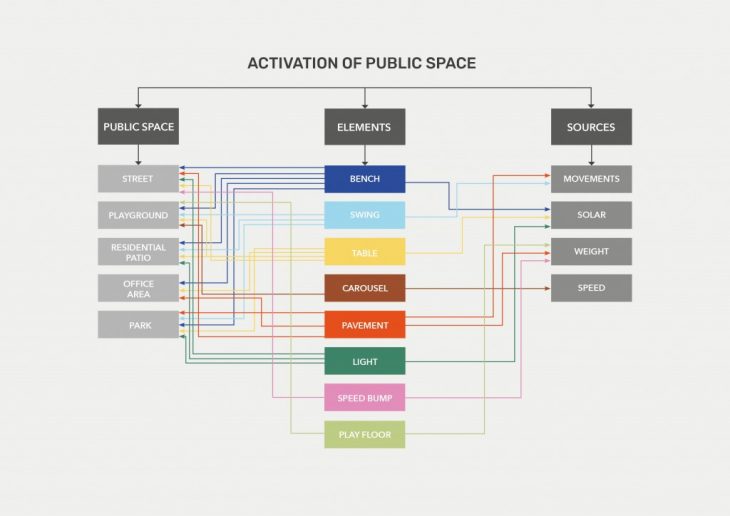
How could we use this strategy in the neighborhood scale?
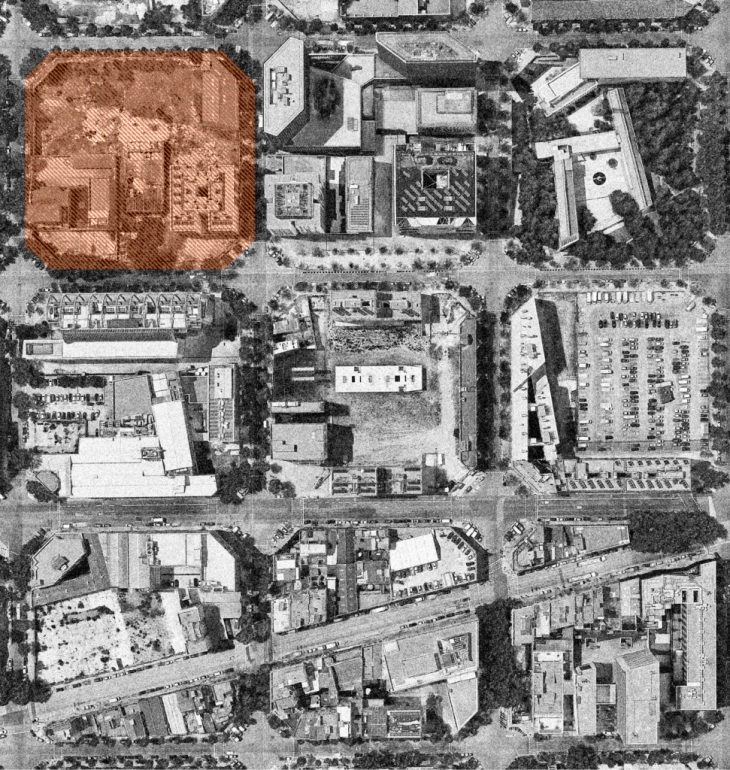
The chosen area is located in Poblenou, in The Superblock 2.0. It is surrounded by Carrer de Badajoz, Carrer de la Ciutat
de Granada, Carrerde Tanger and Carrer de Sancho de Avilla. It has been decided to focus on this area because of its multifunctionality, it conists of offices, school and residential. Also there is an old building which has been involved in the development of the project.

The total energy consumption of the area is 800 MW/YEAR. How could we reduce it designing the public space? Welcome to The PlAYLAND!
DESIGN INTERVENTION
Playland is an attempt to create a Self – Sufficient neighborhood focusing on the public space for different users. The goal of the project is to create a modern, comfortable space as well as to give an opportunity to citizens to be aware of an extremely significant issue – Energy . The vast majority of humans has no idea about its importance, so the aim of the project – “to teach” citizens through the game , to involve people in the Green Energy production process .

The existing empty space of the area has been used as a one platform.
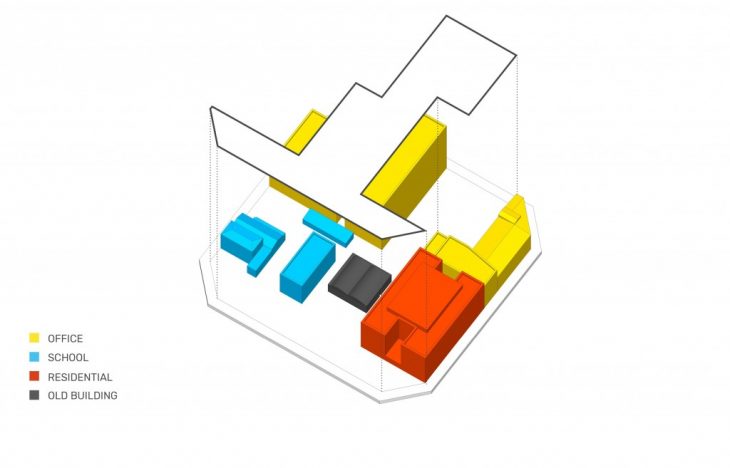
The concept is to interpret this platform as a flat. The Flat consists of rooms that vary in sizes, levels and types of activities .


A big variety of tools is installed in every room which is able to produce green energy due to the interaction with people.
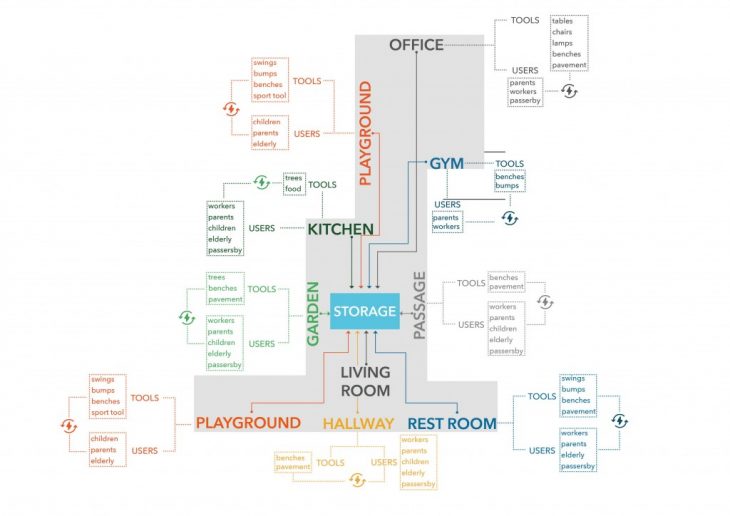
The producing Green Energy flows into the storage, which is located in the old building and after that it is supplied to the surrounding buildings.
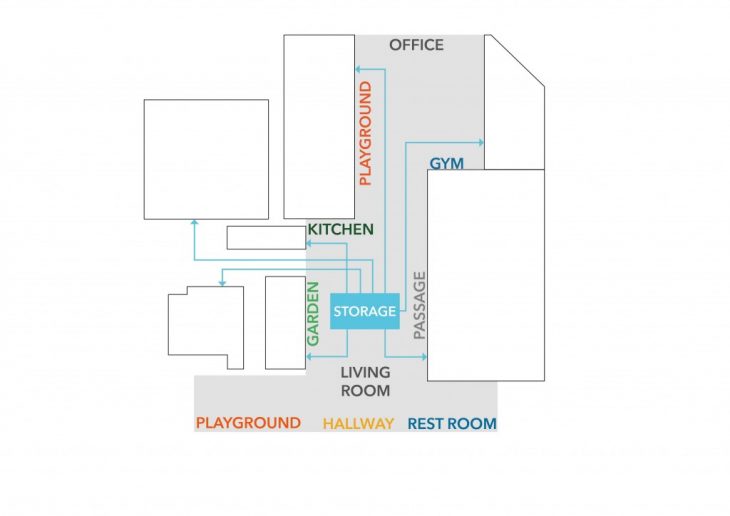

The producing Green Energy flows into the storage, which is located in the old building and after that it is supplied to the surrounding buildings.
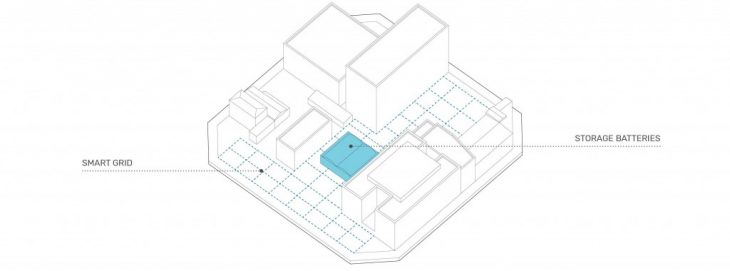
What does a Smart Grid do?
The Smart Grid represents an unprecedented opportunity to move the energy industry into a new era of reliability, availability, and efficiency that will contribute to our economic and environmental health. The benefits associated with the Smart Grid include:
- More efficient transmission of electricity
- Quicker restoration of electricity after power disturbances
- Reduced operations and management costs for utilities, and ultimately lower power costs for consumers
- Reduced peak demand, which will also help lower electricity rates
- Increased integration of large-scale renewable energy systems
- Better integration of customer-owner power generation systems, including renewable energy systems
- Improved security
The smart pavement is connected with a Grid
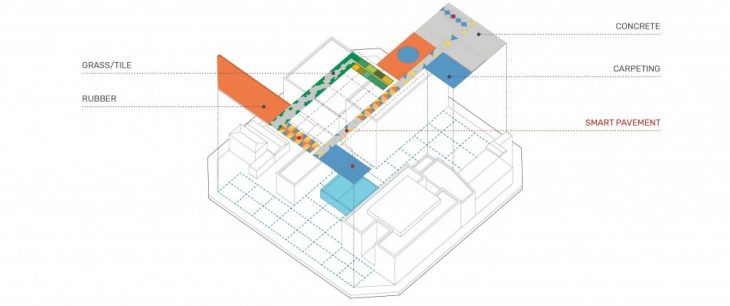
Several tools are also connected with the Smart Grid
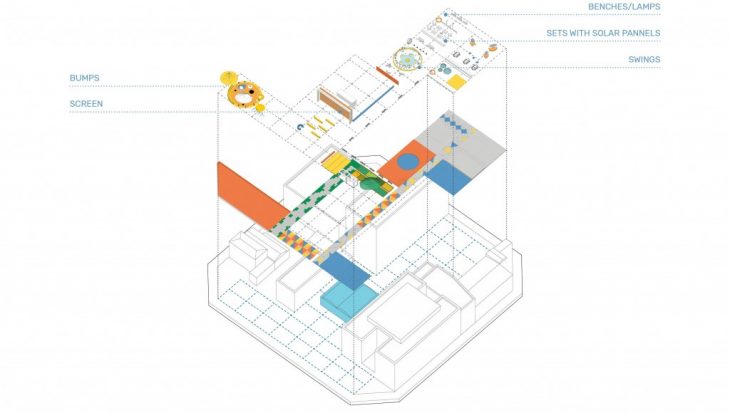
People interaction + smart pavement + tools = GREEN ENERGY
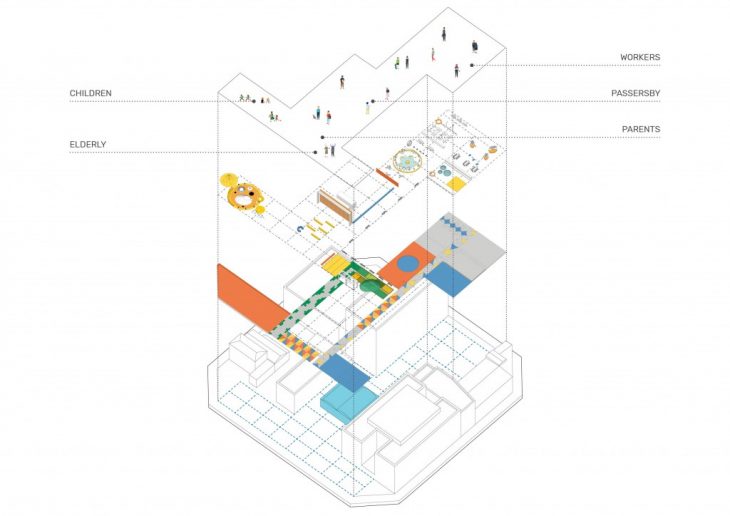
Every room has different tools according to diverse activities, however the installed tools differ in the potential of energy production
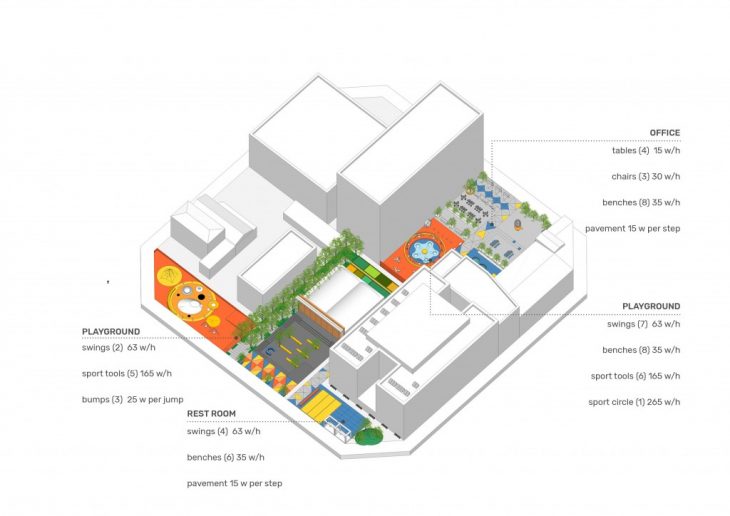
SCHEDULE
As has been mentioned, the idea of the project is to involve people and to influence their behavior . There is an interesting fact that different places of the designed space are used differently during the day.For instance in the morning the most popular space is a garden which is located in front of the cafe. The cafe is designed in the old building which is used not only as an energy storage. Storage batteries don’t need a lot of space, so the remaining open space is also a part of a game because it gives an opportunity to people to cook by themselves the vegetables grown in the garden as well as to share some other food.
8 am:

In the noon the most crowded place is the space for office workers. During the lunch they have an opportunity to enjoy it outside, to charge their devices using a smart furniture and to share their business ideas using the smart screens installed in the tables.
12 am:

Approximately from 3 o’clock in the afternoon when children come back from kindergartens and schools the funniest place – PLAYGROUND is becoming alive. Jumping on trampolines and having fun, children are also involved in the Green Energy production process.
4 pm:
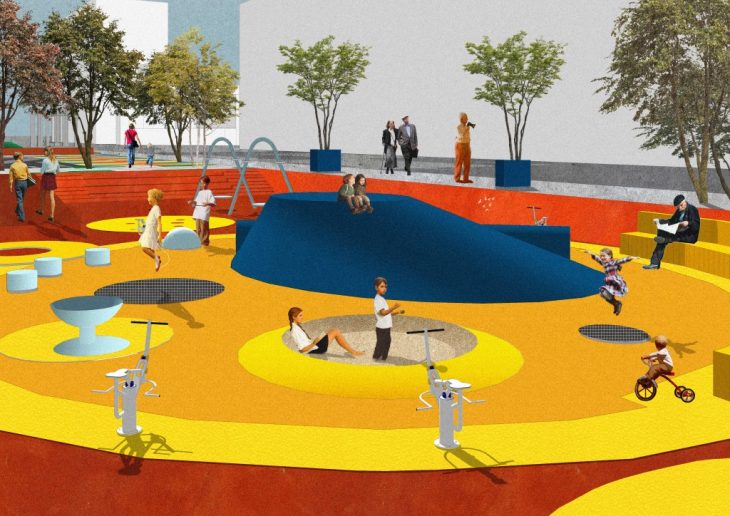
In the evening citizens have an opportunity to watch a movie using the amphitheater which has been designed in front of the screen that has been installed on the old building wall. The space is interpret as a “LIVING ROOM” , it means that citizens of the PLAYLAND can unite and spend time all together there.
10 pm:
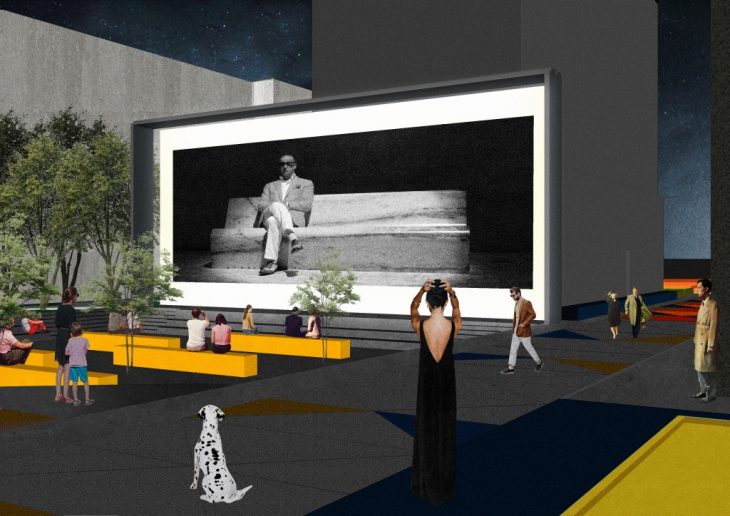
SOCIAL PROGRAM
Nowadays people in Barcelona are disappointed due to the fact that they should pay a lot for the electricity. What if citizens had a small encouragement ? The concept is : more Green Energy you produce, less you pay for the electricity. Maybe the small discount could also stimulate people to be a part of an significantly important issue – GREEN ENERGY PRODUCTION. Let’s see how the whole system works:
PLAYLAND is a project of IaaC, Institute for Advanced Architecture of Catalonia developed at Master in City and Technology in 2018/2019 by:
Students: Maria Uporova and Polina Skorina
Faculty: Vicente Guallart, Mathilde Marengo
Assistant faculty: Honorata Grzesikowsa
